A thousand feet in the air and a quarter-mile ahead, a distended, gray Israeli surveillance balloon is the first sign that we are approaching the Erez Crossing, the official point of entry for foreigners traveling to the Gaza Strip through Israel. The balloon’s ominous, ever-present eyes hover above the mine-laden no-man’s land, pock-marked by artillery fire, that separates Gaza from what can only technically be described as its neighbor. The smell of manure from nearby farms mingles with the briny Mediterranean air, a pungent symbol of uneasy coexistence. We park the car and head for the Israeli checkpoint, a 375,000 square-foot building enclosed in reinforced steel and bulletproof glass. In many ways, it looks like any terminal in a major international airport. Except for the people. There are very few of them. Apart from several dozen heavily armed Israeli officials and a few dapper businessmen traveling on Chinese passports, there is only me, accompanied by a guide from Catholic Relief Services and our two-man film crew from America Media.
Completed in 2007 at a cost of $60 million, the Erez checkpoint was meant to be the place where the two states of the two-state solution would meet. According to the original plan, a secure corridor through Israel would connect Gaza with the Palestinian-controlled West Bank some 40 miles to its east, forming a single Palestinian state alongside the state of Israel. Erez was built to accommodate 45,000 travelers per day. The planners were optimistic, but not without cause. The Israeli army’s withdrawal from Gaza in 2005 led the powers that be to believe that a workable political arrangement might be possible, the kind of deal that would facilitate a vigorous flow of people, goods and services across the checkpoint.
Only about 500 people pass through the Erez checkpoint each day. It is a three-dimensional symbol of Gaza’s dashed hopes.
But just as workers were putting the finishing touches on the Erez facility, the Palestinian Islamic group Hamas started winning elections in Gaza, splintering the Palestinian National Authority into bitterly divided factions. In response, the United States, Israel and much of the rest of the world, who all regard Hamas as a terrorist group, cut off direct aid to Gaza just as Israel tightened its security grip on the enclave. Seven years later, Hamas still controls Gaza’s internal government, and Israel is still master of Gaza’s borders, waters and airspace. Now only about 500 people pass through the Erez checkpoint each day, or little more than 1 percent of its capacity. It is a three-dimensional symbol of Gaza’s dashed hopes.
The Gazans are not the only ones who appear disappointed. The Israeli officials in Erez have the unmistakable bearing of people who would rather be somewhere else, almost anywhere else, as if they each pulled a short straw that sent them here. They are more incredulous than suspicious. The words are, “Why are you going to Gaza?” But the tone is, “Why would anyone go to Gaza?” Our honest reply does nothing to assuage their cynical curiosity: “We’re here,” we say, “to attend a puppet show.”
Under siege
Israel and Hamas will not deal directly with each other, so the Palestinian National Authority, the governing body for Gaza and parts of the West Bank established by the 1993 Oslo Accords, acts as their middle man. That means visitors must pass through three checkpoints to enter Gaza, each less grand and more dysfunctional than the last. Though less than five miles, the journey from Erez to the Palestinian Authority checkpoint and then to the final checkpoint controlled by Hamas can take as long as three Kafka-esque hours, more than enough time to realize how isolated this place is—not just from Israel, which is the intended effect, but from the entire world. The short trip from Erez to Gaza City is a long journey from the first world to the third, or to what former British Prime Minister David Cameron once called the world’s largest “open air prison.”
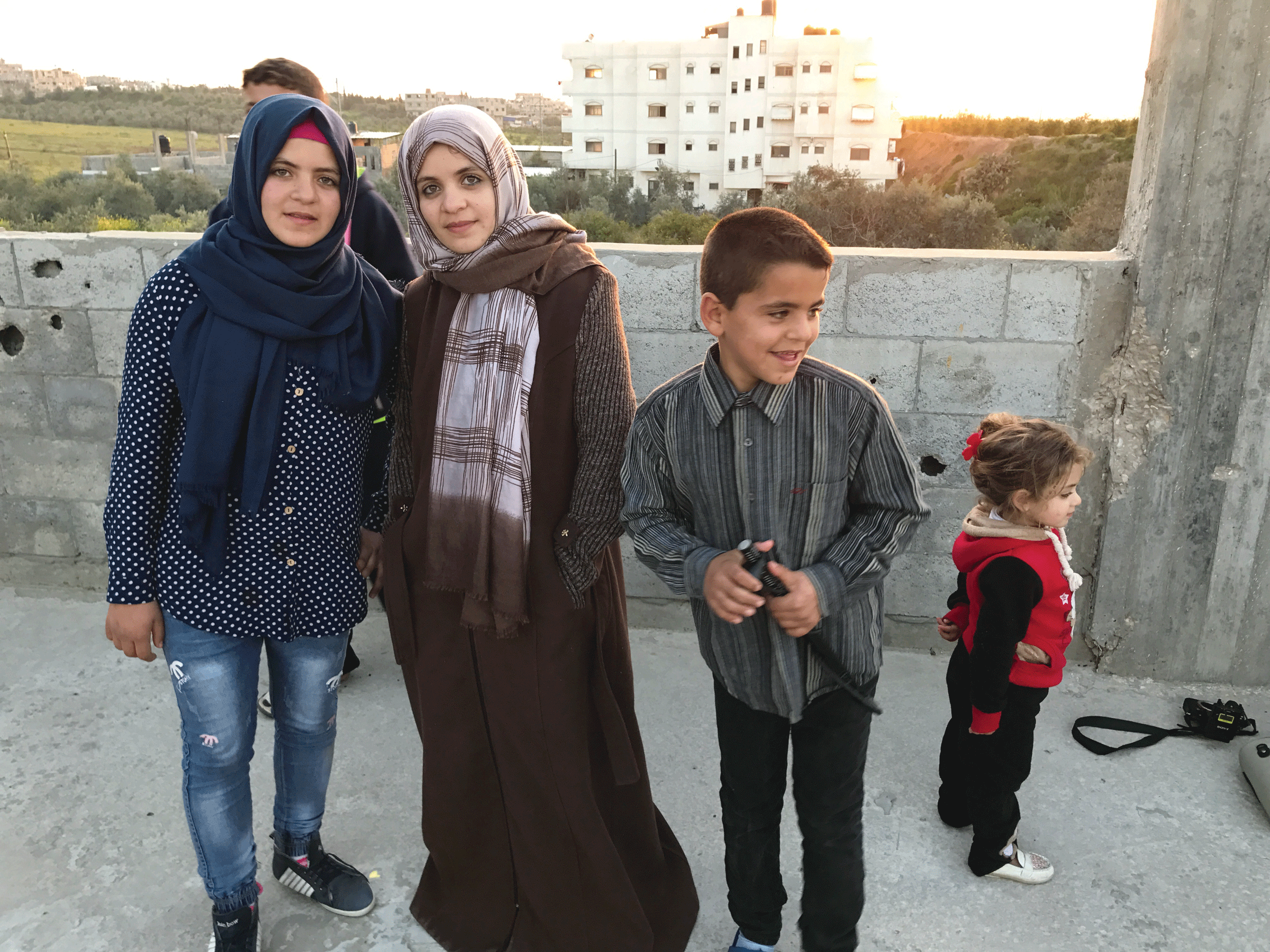
It is easy to see why he thought so. Gazans cannot leave or enter the territory except under extraordinary circumstances and only with the reluctant permission of Israeli or Egyptian authorities. The Israeli Navy blocks Gaza’s access to the Mediterranean, and the strip’s only airport was destroyed in 2000. Hemmed in by Israel to the north and east and by the sea to the west and Egypt to the south, Gaza is easy to blockade because of its tiny size. From a hotel room overlooking the Mediterranean, you can see the northern border with Israel and the southern border with Egypt simply by turning your head. Yet while Gaza has one-tenth the land mass of Rhode Island, it has almost twice the population. Nearly two million people inhabit this scant 141 square miles. To make matters worse, the extensive security buffer to the north and east, patrolled by the Israeli military, makes a sizable chunk of Gaza uninhabitable.
In recent years, there has been progress toward some semblance of a functioning society. About half of the 18,000 homes destroyed during the 2014 war have been rebuilt, mainly through donations from other Arab governments, and a shopping mall was opened recently with great fanfare. But a paucity of natural resources, a barely functioning infrastructure and accelerating population growth make for a volatile mixture of uncertainty and instability. A United Nations study released in 2015 contained a dire warning: “The social, health and security-related ramifications of the high population density and overcrowding are among the factors that may render Gaza unlivable by 2020.”
How did this happen? In a word, war; specifically, three wars in seven years.
Blessings and pleas for peace
After a slow zig-zag through the pothole obstacle course of Gaza City’s central streets, our Toyota pulls into a dusty driveway next to the home of Um Husam, a Gazan woman in her late 30s, whose two-story, cinderblock-and-plaster house sits a couple of miles from the border with Israel. Her house is also in the shadow of a Hamas training camp whose guard tower can be seen just beyond the ridge behind her backyard. As a result, the Husams are directly in the flightpath of Israeli rockets.
In response to Hamas rockets fired at Israeli targets, Israel has taken military action in Gaza on multiple occasions in the last decade. The Israelis argue, with some justification, that they have acted in self-defense and have sought to minimize what government officials call “collateral damage.” In plain English, “collateral damage” means innocent men, women and children. The problem is that dropping dozens of bombs in the third most densely populated polity on Earth will inevitably result in a lot of “collateral damage.” In the most recent Israel-Gaza War in 2014, the United Nations estimates that more than 2,200 Gazans were killed, of whom some 65 percent were civilians. By comparison, fewer than 100 Israelis died, the clear majority of whom were combatants. More than 10,000 Gazans, moreover, were wounded, including some 3,000 children, of whom one-third are now permanently disabled. After just seven weeks of bombing, a third of Gaza’s population had been displaced.
At the end of a generous lunch that would rival an American Thanksgiving dinner, Mrs. Husam tells us in her motherly way that while we have not eaten nearly enough, she will now take us on a tour of her home. She delights especially in the beautiful mosaic that graces the stairwell and includes a quotation from the Quran: “Be thankful for the great things Allah has given you.” Among other things, Allah has given her and her husband seven children, several of whom are now playing in the yard. At their feet is a spent Israeli artillery shell, likely manufactured in the United States and then included in some U.S. arms sale to our closest Middle Eastern ally. A chilling epiphany: All sin is social in nature; there is blood on all our hands.
At their feet is a spent Israeli artillery shell, likely manufactured in the United States and then included in some U.S. arms sale to our closest Middle Eastern ally.
Whatever its origins, Mrs. Husam knows well where the shell landed and the near-deadly path it took through her roof, down the stairwell and into her living room, where it exploded a short distance from her husband and children. Luckily, they were huddled in another room and escaped injury. Her father had not been so fortunate. In a previous conflict, moments after assuring her that all would be well, he was killed right before her eyes by a bomb. As she recounts the night of the most recent attack, you can hear in the rising, pleading pitch of her voice the sound of every mother who has ever feared for her children. “If someone had been in the room, we would’ve been killed. The whole house was shaking. The windows were all broken,” she says. Her eyes sink into grief as her son, Abdulrahman, not yet 10 years old, sheepishly recounts his story: “They killed many children and did other horrible things,” he says. “I want peace. I don't want war.”
What helps them cope? Prayer, she says. And, hopefully, a puppet show.
A refuge for fantasy
Basma is a theater company with a modest but powerful mission: to use the performing arts to help Gazans recover from the trauma of war. In the few years since it was founded, the company has traveled up and down the Gaza Strip sowing seeds of hope and healing. Supported by a grant from Catholic Relief Services, Basma stages serious theater for adults (last year it mounted a production of “Death of a Salesman” in Arabic), but today it is presenting a puppet show for children. Humanitarian relief workers say that half of Gaza’s children are malnourished, one quarter are without health care and one third will die prematurely. They are also the ones who are most likely to suffer the lasting, psychological wounds of warfare.
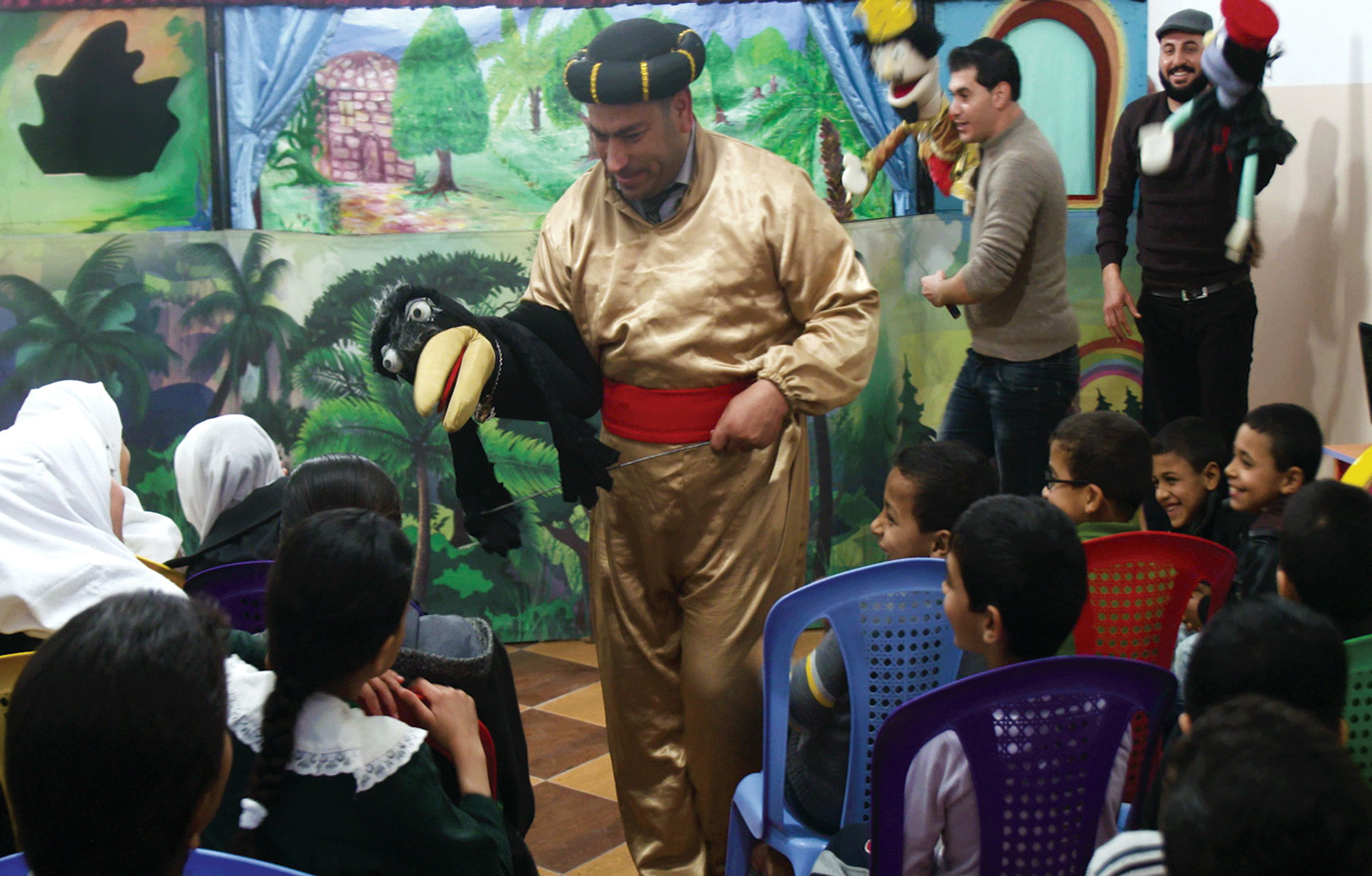
At a neighborhood community center, about 30 children and their parents have gathered to watch the show. The scene resembles the children’s reading hour at your local public library. The squeals are cacophonous; someone needs to go to the bathroom; someone else is complaining that another child keeps touching him; laughter and smiles abound. As the children take their places on multicolored plastic chairs, a rotund, 40-ish Palestinian father of four waits in the wings.
Mohammad El-Masri makes his living as a lawyer. At one time he was also a policeman. But none of that matters to the kids. To them, he is their hero, a kind of Bozo the Clown and Mr. Rogers rolled into one. A former contestant on the TV show “Arabs Got Talent,” Mr. El-Masri has an amazing gift for producing widely varied character voices, as well as the precise sounds of dozens of animals. This Mel Blanc of the Middle East will provide several of the voices for today’s production. During the last war, Mr. El-Masri would visit the shelters and perform for the children while the bombs fell above them. “You could die at any moment,” he says. “I would imitate the sounds of rockets” to help the children to be less afraid. “I’m glad I helped relieve the tension, especially the children’s.”
Today, he says, the children are still frightened. “Sometimes the children hear a strange sound and it scares them,” he tells us, “because it reminds them of the war. Sometimes my daughter asks me if there is another war starting soon.” As he speaks, the look on his face conveys the agonizing disappointment of a father who cannot answer that question with any degree of certainty.
Humanitarian relief workers say that half of Gaza’s children are malnourished, one quarter are without health care and one third will die prematurely.
Mr. El-Nasri, decked out in a gold lamé costume, is the narrator: Once upon a time, he tells them, there was a king whose queen had died. The king now wants to make his daughter a queen, but the queen’s crown is missing a jewel, so he sends the princess out into the forest in search of one. It is too dark for her to see the path, so she asks the children to sing a song so the sun will rise and light her way. In the now-bright light, the princess spies a monkey, who lends her a boat so that she can cross the river and talk to the Black Bird, who “will surely know how to help her.” When she reaches the Black Bird, he tells her that he will give her the jewel if she gives him the boat. “But the boat does not belong to me,” says the princess. The Black Bird suggests that the princess give him the boat and tell the monkey that the boat was stolen. The princess refuses to lie and goes home to the king, heartbroken, to tell him that she has no jewel and cannot be queen. “You have not failed,” the king tells his daughter. “This was a test of your character. I now know that you will be an honest queen and I will crown you with the biggest crown in the kingdom.”
This is theater at its best, a fantasy that helps people make sense of reality. “Honesty is the moral of the play,” says Nahid Hannona, the show’s director. “My favorite scene is with the princess and the crow. The princess didn’t want to lie, so she asked the children for advice. The children agree with the princess: she shouldn’t lie.”
The story is told in the universal language of children. There are kings and princesses and talking birds, and they all live happily ever after. Basma has rewritten the puppet show more than 10 times with the help of child psychologists who specialize in post-traumatic stress. “We want the children to have hope in life and in the future,” Mr. Hannona says. But the puppet show also speaks to the interminable conflict that defines the children’s present. Its morals are meant to instruct, but to comfort as well: Do not take something that does not belong to you. Do not lie to your friends. And most important: Though the forest is dark and forbidding, do not be afraid.
Basma’s efforts seem to be paying off. Seated near the front of the audience is Mrs. Husam’s little boy, Abduhlrahman. Whenever he talks about what happened during the war, his eyes narrow in sadness and fear; they have seen more that than they should have. But now, amid the laughter of his friends and the care of his kind-hearted neighbors, Abduhlrahman is smiling and laughing too. It is as if the innocence that his mother feared was gone forever has somehow, almost magically, reappeared. For a moment, “happily ever after” seems possible.
Harvesting concrete
Tattered, faded green-and-white Hamas flags, dangling beneath the broken bulbs of the street lights, line the roads leading to our hotel. Windswept, strewn with the wreckage of warfare, half the streets bear the signature of Israeli firepower. At the site of the once-towering apartment buildings near the northern border, across from an enormous field filled with refuse, the destruction is stark and nearly total. Old men are “harvesting” concrete: collecting the blown-up bits of their former homes, grinding them into powder and recycling the material for new construction.
Old men are “harvesting” concrete, collecting the blown-up bits of their former homes, grinding them into powder and recycling the material for new construction.
Our car follows the narrow road between the city and the sea. To our left is the oldest refugee camp in the Gaza Strip, established after the first Arab-Israeli War in 1948; generations of refugees have lived and died here. To our right, Palestinian fishermen rock and bob in doughty little boats. It is hard going. Under international law, Gazans have the right to fish within 20 nautical miles of the shore, but under the Oslo accords, they are restricted to six nautical miles; under the watchful eye of an aggressive Israeli Navy, the actual limit is closer to three. Due in part to the limited access to the fishing grounds, today a caravan of donkey carts waits to transport food from a World Food Program distribution center; it is a reminder that three-quarters of Gazans require some form of food assistance.
Three years on from its latest cataclysm, 65,000 Gazans are still internally displaced; 60 percent of the youth are unemployed; the suicide rate is climbing. Those appalling statistics, Haaretz reported in June, “are like a ticking bomb that could eventually push the Hamas government into a new clash with Israel.” While war is not inevitable, at least this much is certain: If war does come, it is not the war-makers who will suffer most; rather, it is innocent people like the fishermen and the old men and the Husams who will suffer the onslaught. As we make our way to our hotel, a haunting question: What next will test their resilience?
Hope in the sounds of Gaza
The balcony of my hotel room on the Gazan shore provides a front-row seat to another show: a Mediterranean sunset, in all its dazzling light and color. Why would anyone want to go to Gaza? For the same reason that people of faith want to go anywhere: to find God. It’s easy, of course, to see God in the sunset. But finding God in the agony of Gaza? That’s hard. And yet God is here, in the generous hospitality of a people of meager means; in the unbounded love and care of mothers; in the healing work of a father and his devoted company of artists.
If the Erez checkpoint is a symbol of Gaza’s broken dreams, the puppet show is a sign that dreamers like Mr. El-Masri will not give up.
After their years of violent, unrelenting struggle, we expected to meet an embittered, downtrodden people. But while Gazans are anxious and angry, they’re not despairing. They are a proud people, but with unassuming hopes: water, food, housing, education—in other words, a future. That future may yet be within reach. If the Erez checkpoint is a symbol of Gaza’s broken dreams, the puppet show is a sign that dreamers like Mr. El-Masri will not give up. “There are people in Gaza who love life and who love to dance,” he said. “I love its people, its children and even its broken streets. I love the sounds and voices of the street vendors.”
As I watch the light retreat across this city that has lived with war for three millennia, I remember something else Mr. El-Masri said: “Gaza is my homeland. Its sadness is my sadness. Its joy is my joy.” The people want to live, not merely survive. And like the princess in the forest, they live in hope. “Remember,” he said, “after every dark night, there is always a dawn.”


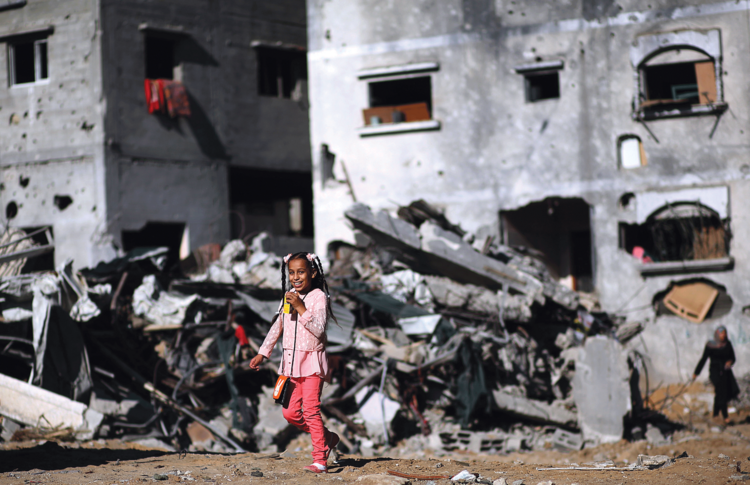
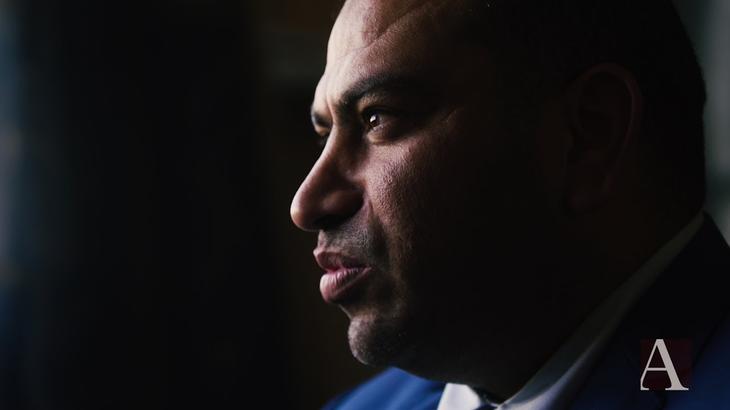


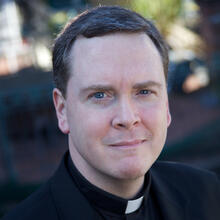





I feel sorry for the innocent Gazans, especially the kids and old people who are traumatized by all this trouble. At the same time, the PSA keeps electing Hamas, a terrorist organization to lead them. Hamas also does not recognize the Jewish State of Israel, established in 1948 through a valid UN resolution. Palestinian kids are often taught on TV and in school to hate and kill Jews. Hamas has been known to use money earmarked to repair/rebuild schools, clinics, and the like for underground tunnels to smuggle weapons and terrorists in to Israel. While I do not agree with everything the Israeli government does at all, it seems to me the Palestinians, especially the Gazans, need new leadership that is truly interested in peace for people in both states. A couple of years ago, my parish hosted a Palestinian Christian artisan couple from Bethlehem at Mass, and afterwards, they sold their wares in the lobby. I was purchasing some items and asked them about the Israeli checkpoints. They looked at each other, and the wife said they hated them, but they did not blame the Israelis at all, with the terrorist activity.
After several years, it appears that Hamas is not doing the job of making Gazans' and other Palestinians' lives better, but only causing trouble and heartache for all. I appreciate Malone's attempts to be evenhanded, but there's more to it than what he mentioned in this article.
Ms. Weissman's commentary on Fr. Malone's tale of Gaza is a fairly quintessential one, reflecting as it does the eminently successful propaganda ( hasbara) onslaught unrelentingly directed by Israel at the Americans over the past half-century. American Catholics, I'm presuming Weissman is one of them, are largely, by which I mean the vast majority of them, steeped in an embarrasing level of ignorance regarding the Israel-Palestine issue and unfailingly regurgitate the same old litany of mendacious talking points that highly manipulative and clever zionist PR people dump in their laps. In regard to suffering Palestine, Ms. Weissman you are exposing yourself as intellectually wanting and this dereliction poorly serves the cause of the virtue of Justice.